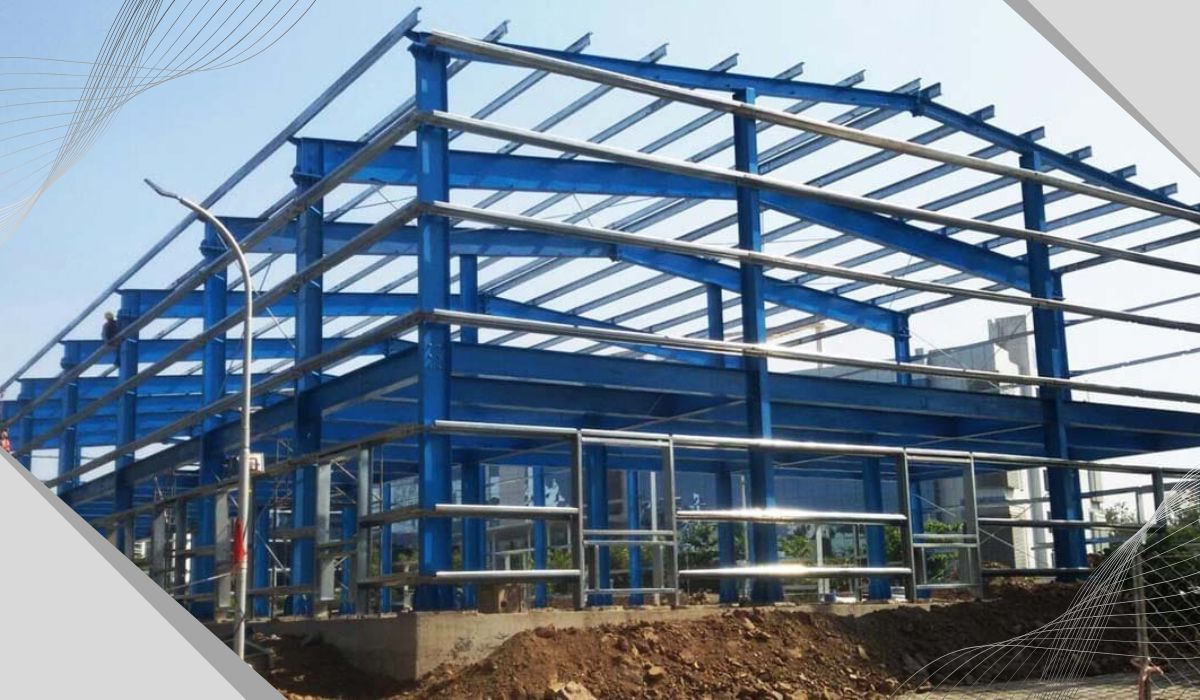The realm of structures—whether in civil engineering, architecture, digital frameworks, or educational domains—is vast, complex, and always evolving. Understanding how structures behave under load, how they interact with the environment, and how digital systems mirror physical systems is increasingly vital. It’s here that StructureSpy com positions itself as a bridge between raw technical complexity and practical, accessible insight. This article explores what StructureSpy com is, what it offers, how it compares with similar tools, and how you can make the most of it in different contexts.
What Is StructureSpy com?
At its core, StructureSpy com is a web-based platform that offers structural analysis and insight tools. It is designed to serve a diverse audience: structural engineers, architects, students, educators, digital system analysts, marketers interested in infrastructure or website architecture, and generally anybody curious about the design, stability, and performance of structures—be they physical (bridges, skyscrapers, stadiums) or digital (website architectures, data models, SEO structures). The goal is to take what is often technical and nuanced, and render it comprehensible through interactive visualization, reporting, templates, and collaboration capabilities. (As described in the BCECE guide to StructureSpy com.)
Key Features & Capabilities
StructureSpy com stands out because of the variety and depth of its feature set. Some of its strongest offerings include:
- User-Friendly Interface – Even users with limited technical background can navigate the platform. Dashboards are clean; tools are laid out with clarity; options are intuitive. This reduces onboarding friction.
- Real-Time Analysis – Whether for stress analysis in physical structures or performance diagnostics in digital frameworks, StructureSpy offers tools that update quickly, letting you see the effect of changes immediately.
- Comprehensive Reporting – The platform generates reports in multiple formats (PDF, Excel, CSV) that are digestible. These are tailored not just for specialists but also for presentation or educational purposes.
- Customizable Tools & Templates – Templates for common structural types (e.g., reinforced concrete frames, load-bearing walls, website navigation trees) help users get started quickly. Customization means you can adapt to project-specific parameters.
- Interactive Visualizations – 2D/3D models, zooming, hovering, dynamic displays help users understand structural behavior and relationships visually, which is often more intuitive than purely numerical output.
- Collaboration and Sharing – Especially useful for team-based engineering or student projects. Sharing tools allow multiple stakeholders to view, comment, and work together in real time.
- Cross-Platform Accessibility – Accessible via browser on desktop, tablets, smartphones. So whether you’re in the field or the classroom, you can access your models and reports.
- Security & Privacy – The platform places importance on protecting user data, ensuring that designs, analysis models, or proprietary structural plans remain confidential.
- Free & Paid Plans – For learners or individuals, a basic or free plan gives substantial access; for professionals or larger teams, paid plans unlock advanced features.
Why StructureSpy com Matters (Usefulness & Applications)
It isn’t enough for a tool to simply exist—it has to serve real needs. StructureSpy com does this across a number of domains:
- Engineering & Architecture: Facilitates load, stress, seismic, dead/live load analyses. Ideal for sketching early designs or verifying certain aspects of a structure before moving to more detailed dedicated engineering software. Helps in educational settings for teaching structural insight.
- Education & Skill Development: Great resource for students because of its visualization features, templates, and relatively gentle learning curve. It enables a hands-on understanding of structures without needing to master command line tools or complex software first.
- Digital Systems & Website Architecture: While its core focus is structural engineering, the platform’s concept extends well to digital structures—site maps, navigation hierarchies, content architectures. Marketers, UX designers, or web devs can use it to spot weak links, bottlenecks, or inefficiencies.
- Cybersecurity & System Stability: In the digital domain, having insights into structure means identifying vulnerabilities, broken links, logical flow errors, performance bottlenecks. This contributes to more resilient systems.
- Small Businesses & Freelancers: Because of cost-effectiveness and accessible plans, this is a tool that smaller outfits can use to do structural checks, audits, or even architectural visualization without investing huge sums in software or specialists.
Pros & Cons
Every platform has trade-offs. Knowing them helps you decide when StructureSpy com is ideal, and when you might need something else.
| Pros | Cons / Limitations |
| Highly accessible for novices; intuitive UI | May not give the depth or precision of specialized engineering/CAD tools for highly complex or safety-critical designs |
| Real-time feedback, good visualization | Potentially fewer integrations than big established tools; some users might find missing niche functionality |
| Templates speed up workflow | For very advanced custom analysis, you may need more domain-specific software or code-based tools |
| Cross-platform access, collaboration features | Paid plan needed for enterprise-grade features; free tier might limit project size or complexity |
| Valuable for education and small/medium scale projects | Updates and new feature roll-out might lag behind big players; support might vary by plan |
Comparison: StructureSpy com vs Other Tools
To better situate StructureSpy com in the landscape, here’s a comparison table with some similar platforms / tools (real and hypothetical) to understand where it excels and where others might lead.
| Feature / Tool | StructureSpy com | OpenSees / OpenSeesPy | Dedicated CAD / Structural Analysis Software (e.g. SAP2000, ETABS) | Website / SEO Architecture Tools (e.g. Screaming Frog, SEMrush) |
| Ease of use (UI) | Strong (low learning curve) | Rougher; more coding / scripting required | Medium to hard; professional software with complex UI | Strong for digital structure; less so for physical engineering |
| Visualization (2D/3D interactive) | Yes; strong visualizations for both physical + digital structures | Yes, but with steeper learning curve | Very strong for physical structures, advanced rendering | Good for digital structures, but not for physical load visualizations |
| Real-time feedback / updates | Yes | Partial; more batch or simulation-based | Depends; often simulation runs are heavy, not instantaneous | Yes, for digital metrics |
| Template availability | Good; many starter templates | Less so; more custom scripts often needed | Some templates or libraries, but often requires setup | Many templates for audits, SEO reports etc. |
| Cost / Access for learners | Accessible; free/basic + paid plans | Mostly free/open source; but steeper learning curve | Expensive licenses; high cost for full versions | Subscription model; range of pricing includes lower tiers |
| Best suited for | Mixed use: physical + digital structures; education; moderate projects | Research, academics, custom physical structural simulation | Large, safety-critical structural design; complex engineering works | Website structure, SEO audits, digital marketing strategy |
How to Get Started & Tips for Maximizing Value

If you decide to adopt StructureSpy com (or are a new user), here are some steps and tips to help you extract maximum benefit:
- Define Your Objective First: Are you studying load stresses? Visualizing an architectural concept? Auditing website structure? If you know what your goal is, you can choose the right template, input parameters, and avoid wasted effort.
- Start Small, Build Up: Use the free or basic plan to experiment. Try simple projects (e.g. a small span beam, or small website hierarchy) before moving to more complex ones. This helps you learn the interface and limitations.
- Use Templates Wisely: Templates accelerate setup; but always review the assumptions embedded (material properties, safety factors, default loads) to ensure they are appropriate for your region or use case.
- Leverage Visualizations for Learning & Communication: If you’re teaching or presenting, the interactive visuals are powerful. Even for personal understanding, seeing how structures behave visually gives insights you might miss purely numerically.
- Collaborate & Share Feedback: Use the sharing features to get input from peers, mentors, or clients. Different perspectives can spot weaknesses you overlooked.
- Compare & Integrate: Use StructureSpy com alongside specialized tools. For example, use it for early design, then move to ETABS or SAP2000 for detailed structural verification if needed. Or combine with SEO tools if you’re dealing with digital structures.
- Stay Updated: Platforms like this often roll out new features, bug fixes, performance improvements. Keep track of updates; explore new modules as your project demands grow.
Limitations & What to Watch Out For
Even though StructureSpy com offers a strong package, there are certain areas where expectations should be managed:
- For highly complex engineering designs (large span bridges, unusual materials, non-linear dynamic analysis, etc.), professional / certified engineering software may still be necessary.
- Material behavior under extreme or unusual conditions (e.g. earthquake zones, very heavy loads) may require specialized analysis that goes beyond what StructureSpy offers.
- If you need integration with other tools (BIM software, structural drafting, finite element solvers, etc.), check in advance whether StructureSpy com supports or can export data in compatible formats.
- Paid plans may be essential for serious use; free tiers are great but often limited in complexity, scale, or export features.
- Support quality may vary depending on your subscription; for mission-critical work, check service level agreement (SLA) or customer feedback.
Future Potential & What to Expect
Given the rising demand for accessible tools, visualization, and integration of physical and digital structural understanding, the future looks promising for StructureSpy com. Possible directions include:
- AI-Assisted Analysis: Automated suggestions, predictive modeling, anomaly detection to warn users of potential failure or inefficiencies without having to build full models.
- Greater Integration: Support for BIM, CAD export/import, importing material libraries and regional code requirements.
- Enhanced Collaboration Tools: Versioning, annotations, shared workspaces, perhaps plug-ins for project management tools.
- More Industry-Specific Modules: Modules tuned for earthquake engineering, offshore structures, digital infrastructure, or digital marketing architectures, etc.
- Mobile / AR / VR Visualizations: Visualizing structures on-site with augmented reality, or immersive 3D walkthroughs, could be a game changer especially for architecture students or consultants in the field.
Who Should Use StructureSpy com (Ideal Users)
StructureSpy com is best suited to:
- Students of civil engineering, architecture, or related fields who want hands-on exposure without heavy software investment.
- Freelancers or small firms needing to sketch, verify or communicate structural/design concepts quickly.
- Educators teaching structure/design; using interactive visuals to clarify concepts.
- Digital system designers or UX / SEO specialists who want to see structural analogies or use the tool for web architecture or content hierarchies.
- Entrepreneurs or small businesses interested in auditing or verifying digital or physical infrastructure in a cost-effective manner.
Final Thoughts
StructureSpy com represents a confluence of education, engineering, and digital structure analysis. It’s not just a tool for experts; its strength lies in making structure accessible—helping people understand how design, forces, materials, and organization come together to form stable, efficient systems. Whether you’re designing a building, optimizing a website, or simply curious, StructureSpy com offers a versatile platform to explore, learn, and create with confidence.
If you haven’t tried it yet, begin with one of its templates or your own small project; use the visualization features; see where its insights lead you. As it grows, it could well become a staple in many engineers’ and learners’ toolkits.
Also Read About :- TechLoomz com
